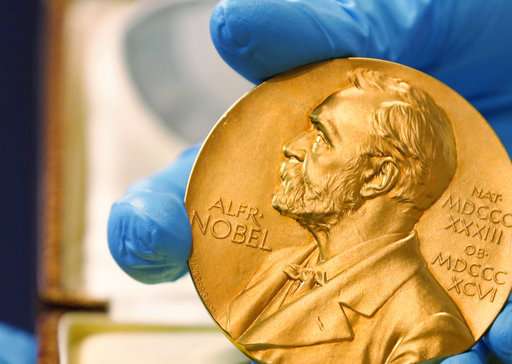Nobel physics prize: A big award often for tiny materials

The Nobel Physics Prize honors big discoveries involving materials often too small to be seen by the naked eye.
The 2017 prize being announced Tuesday by Sweden's Royal Academy of Sciences comes with 9 million kronor ($1.1 million). For the past 25 years, the prize has been shared among multiple winners.
The 2016 prize went to three British-born researchers who applied the mathematical discipline of topology to help understand the workings of exotic matter such as superconductors and superfluids. In 2014, a Japanese and a Canadian shared the physics prize for studies that proved that the elementary particles called neutrinos have mass.
This year's Nobel medicine prize went Monday to three Americans studying circadian rhythms—better known as body clocks: Jeffrey C. Hall, Michael Rosbash and Michael W. Young.
© 2017 The Associated Press. All rights reserved.



















